
However, the only topminnow-ish fish we could find were western mosquitofish. Pretty much every species in the creek would be a lifer for Gerry, so we spent some time microfishing for whatever we could find. We caught orangethroat darter, rainbow darter, redbelly dace, and Ozark sculpin. The darters weren't particularly colorful, but I was happy to get good photos of the other two.
Southern Redbelly Dace (Chrosomus erythrogaster)
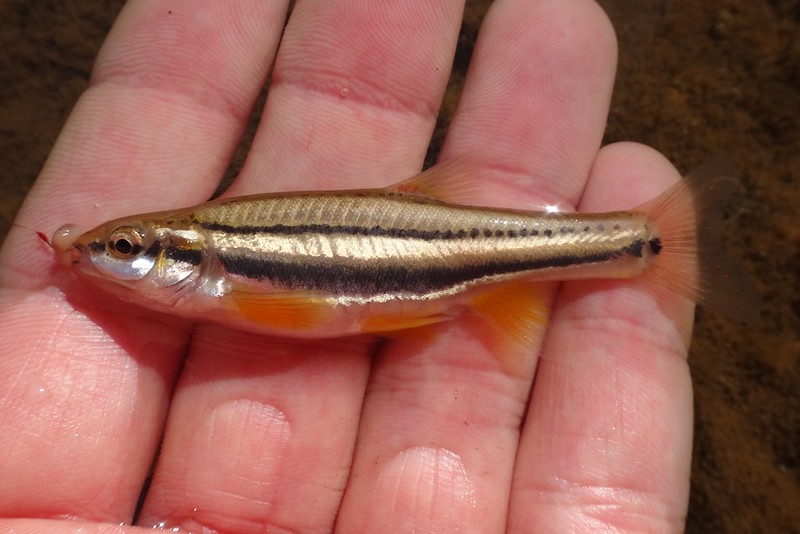
Ozark Sculpin (Cottus hypselurus)
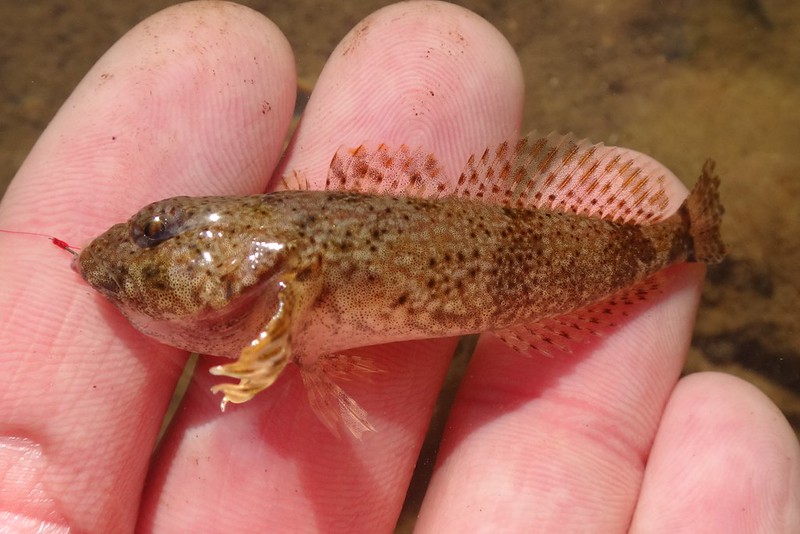
We had several backup plans for plains topminnow. The first was Lane Spring, which was just a few minutes down the road. It's pretty big as far as springs go, and it empties into Little Piney Creek. I had a good feeling when we saw all of the vegetation.

However, once again we found mosquitofish instead! We got our hopes up when we saw some topminnows, but they turned out to be blackspotted. In the creek we caught bleeding shiner, redbelly dace, creek chub, bluegill, orangethroat darter, rainbow darter, and Ozark sculpin.
Western Mosquitofish (Gambusia affinis)
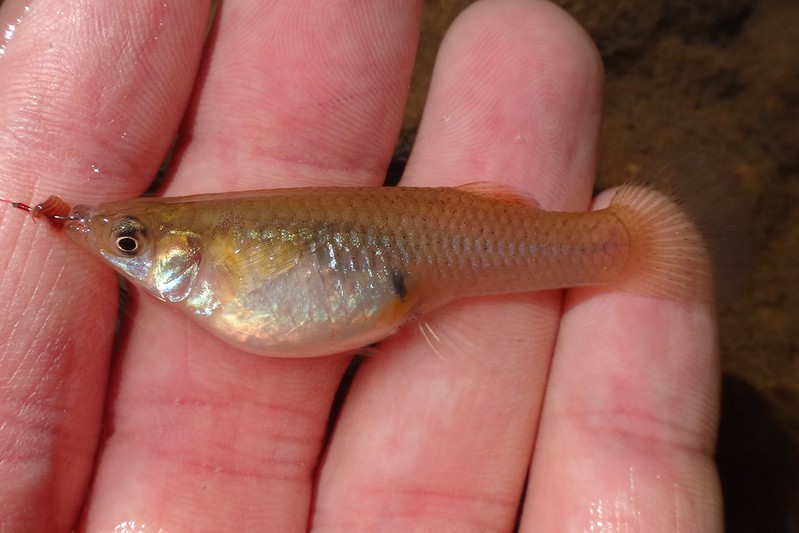
Our last chance for plains topminnow was Wilkins Spring. The U.S. Forest Service road we took to reach it was pretty dicey, but Gerry's AWD vehicle handled it without any problem. We walked through the big puddles in our wading shoes before we took any risks with the car.
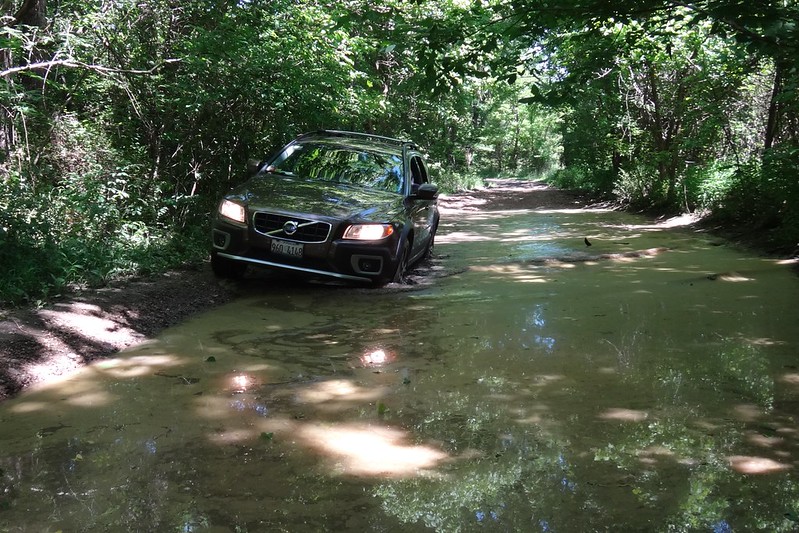
Wilkins Spring, which flows into Mill Creek, was dammed up a long time ago to form a small pond. We were expecting clear water, but it turned out to be surprisingly cloudy, perhaps from limestone?

We walked the shore looking for topminnows. It didn't take us long to find them. At first we only saw a few, but pretty soon we were finding small schools of them everywhere. Gerry had brought a 12 foot fixed line crappie pole that was the perfect length for reaching them.
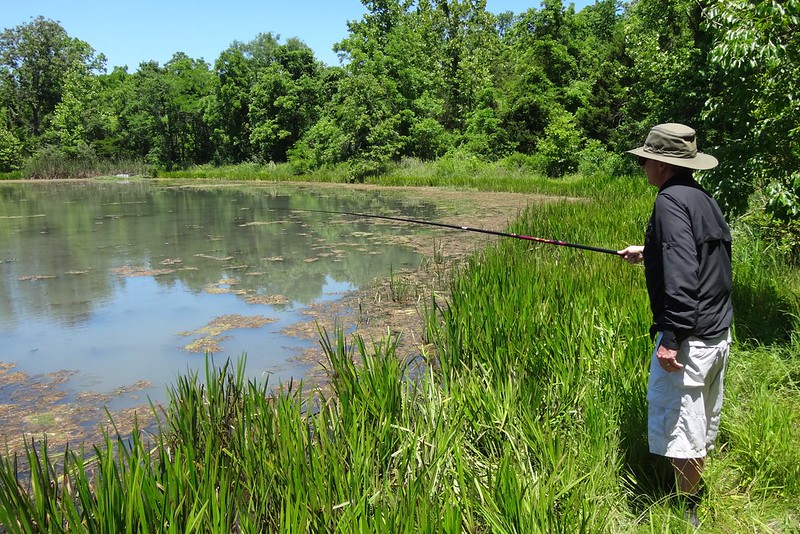
This photo shows the cloudy water, the vegetation, and a small school of topminnows. They spooked easily, so we had to stand perfectly still as we fished for them.
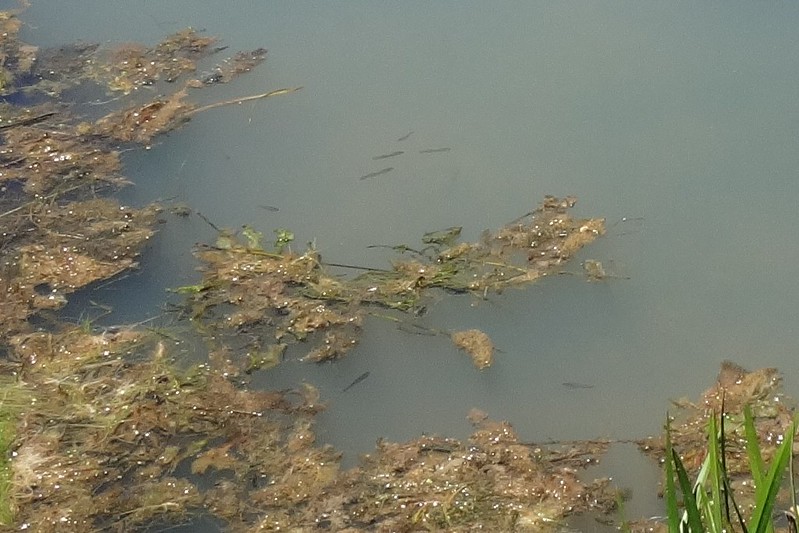
Plains Topminnow (Fundulus sciadicus) - new hook & line species #443
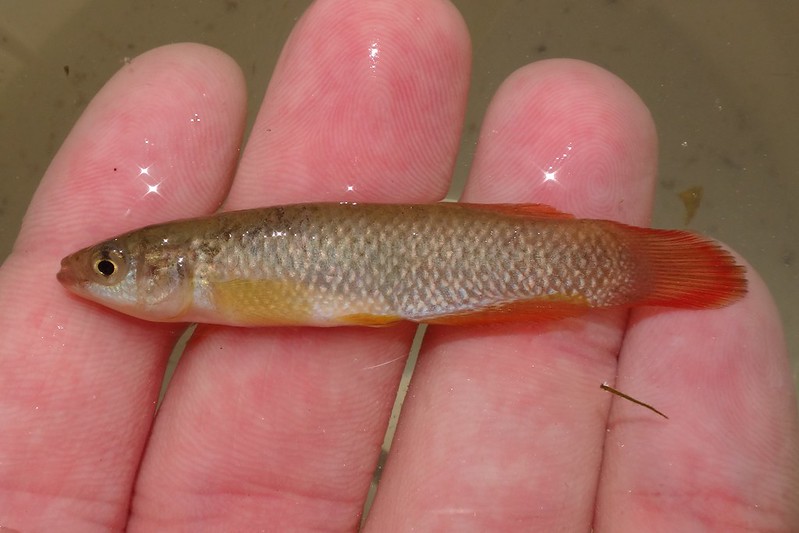
Gerry was racking up the new lifers, and I was happy to have one on the board. Our next stop was the confluence of Spring Creek and the Big Piney River. It had a wide variety of habitats and turned out to be a great place to explore and look for different species.
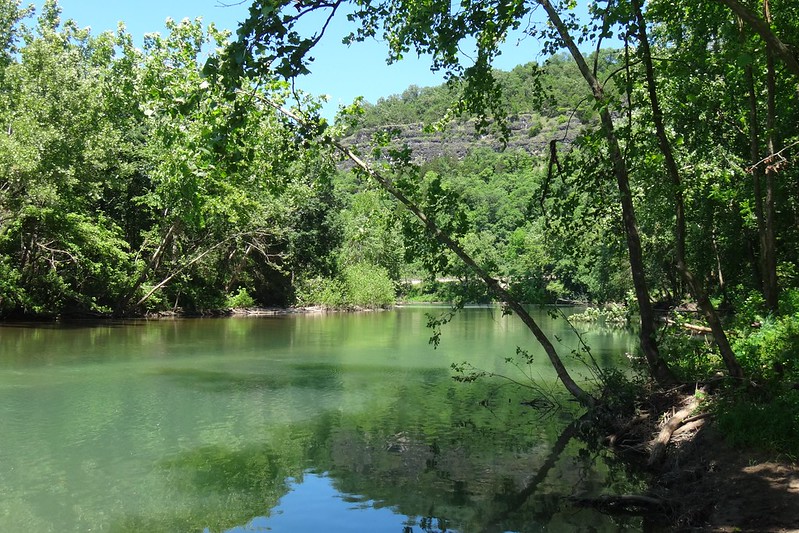
I wandered up Spring Creek looking for stippled darters, but they were nowhere to be found. They probably prefer the headwaters over the lower stretch of the creek. The mix of species was similar to the previous spots - sculpins, redbelly dace, bleeding shiners, and rainbow darters. Gerry caught a huge northern studfish in one of the pools, and he set up a bank rod and caught a huge northern hogsucker.
Ozark Sculpin (Cottus hypselurus)
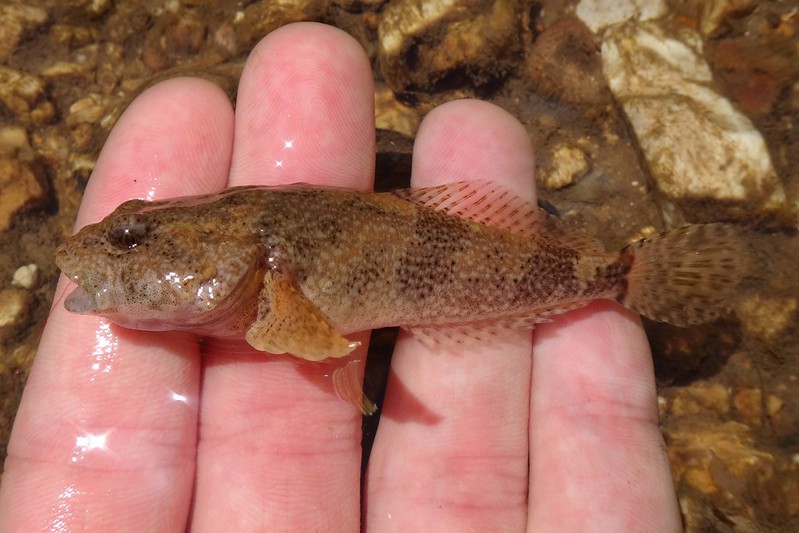
We saw some long slender fish in one of the deep pools that I identified as brook silversides. I tried to catch one, but what ended up on the end of my line was a carmine shiner. I'm pretty sure the fish we saw were silversides though. I've only caught one in my life, so it would have been nice to finally get another.
Carmine Shiner (Notropis percobromus)
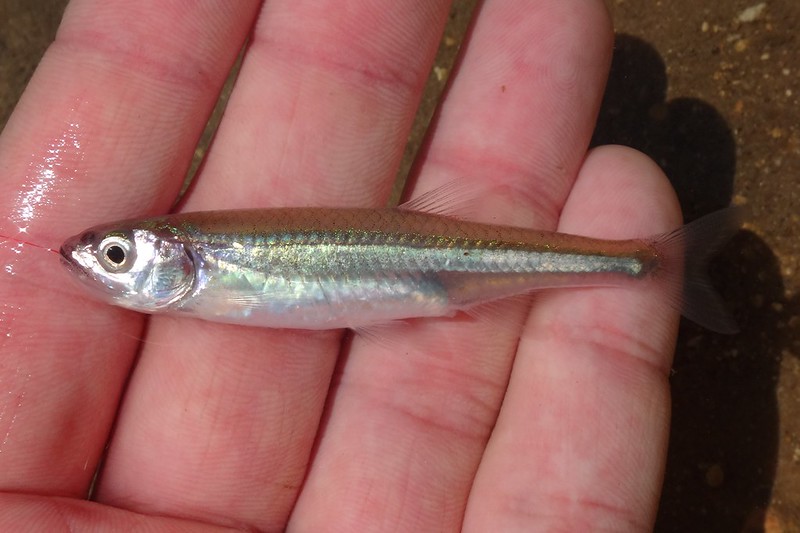
I waded through the riffle again, hoping to find something new. A slender madtom came out from one of the rocks, so I coached Gerry through the process of catching it on hook & line. Then, I spotted a darter that I knew wasn't an orangethroat or rainbow. Its back was a light tan color, and it had several dark saddles that blended in extremely well with the surrounding rocks. I was 99% sure it was a saddled darter, so I announced that we weren't leaving until I caught one. After a few minutes of watching darters dash away from my feet, and after a bit of cursing, I found one that stayed put and went for my bait!
Missouri Saddled Darter (Etheostoma tetrazonum) - new hook & line species #444
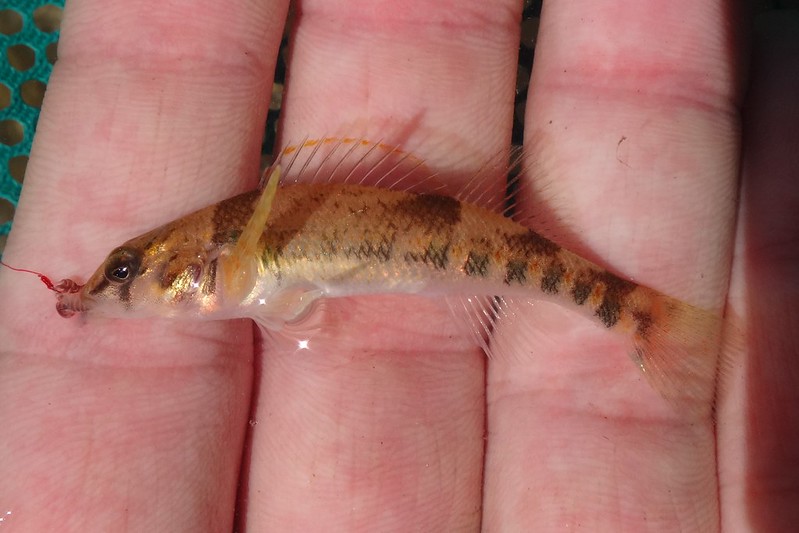
At this point we had done a great job catching our targets for the day, so anything else would be a bonus. We continued west to the Gasconade River and fished its confluence with Roubidoux Creek. The river's water was muddy, but the creek's water was clear.
We were amazed to see debris stuck in the bridge, apparently from the flooding that had occurred earlier in the spring. The river must have risen nearly 30 feet!

We could see a variety of larger species in the creek - smallmouth bass, rock bass, longear sunfish, northern hogsuckers, and redhorse. The redhorse were actively feeding, and when one came close to shore I was able to get my bait in front of it. After a short battle on light line, I was happy to see that it was a black redhorse. This is the second one I've caught, with the first one being from southern Illinois a year ago.
Black Redhorse (Moxostoma duquesni)

Shininess is probably not a good ID characteristic, but from the few black redhorse I've seen, I've always noticed that their scales are much more shiny than golden redhorse. The two species have similar colors, but to me the scales on blacks look they're made out of some sort of reflective metal.

We could see a variety of larger species in the creek - smallmouth bass, rock bass, longear sunfish, northern hogsuckers, and redhorse. The redhorse were actively feeding, and when one came close to shore I was able to get my bait in front of it. After a short battle on light line, I was happy to see that it was a black redhorse. This is the second one I've caught, with the first one being from southern Illinois a year ago.
Black Redhorse (Moxostoma duquesni)

Shininess is probably not a good ID characteristic, but from the few black redhorse I've seen, I've always noticed that their scales are much more shiny than golden redhorse. The two species have similar colors, but to me the scales on blacks look they're made out of some sort of reflective metal.
We saw schools of micros but decided to focus on larger species, even though I knew none of them would be lifers. My next catch was a northern hogsucker, which eagerly moved forward to vaccuum up my worm off the bottom.
Northern Hogsucker (Hypentelium nigricans)

The boulders near shore had longear sunfish hiding under them.
Longear Sunfish (Lepomis megalotis)
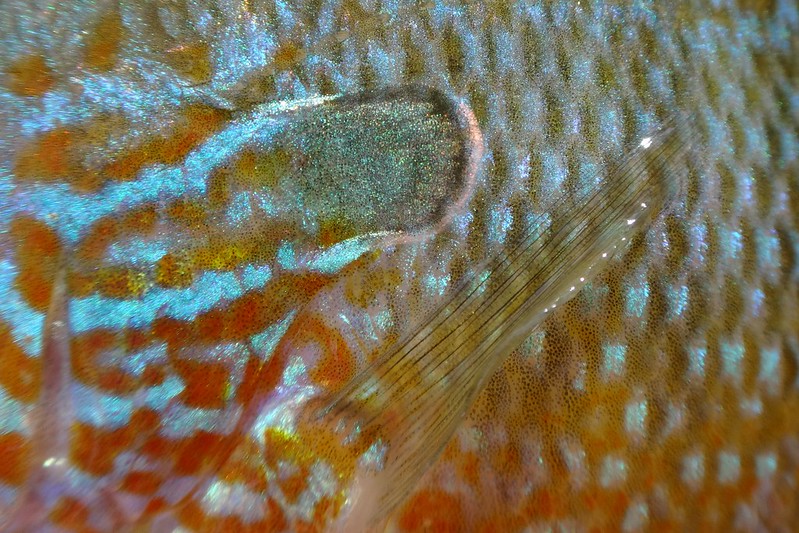
We had one more stop planned, but it was getting late in the day and we didn't want to drive further west. Instead, we decided to park along Roubidoux Creek a few hundred yards upstream from the confluence.
Northern Hogsucker (Hypentelium nigricans)

The boulders near shore had longear sunfish hiding under them.
Longear Sunfish (Lepomis megalotis)

We had one more stop planned, but it was getting late in the day and we didn't want to drive further west. Instead, we decided to park along Roubidoux Creek a few hundred yards upstream from the confluence.
I was once again looking for stippled darters, but all I could find were rainbows and orangethroats. There were a lot of small sculpins and crayfish as well. The pools below riffles had bleeding shiners and striped shiners that would attack your bait instantly.
Bleeding Shiner (Luxilus zonatus)
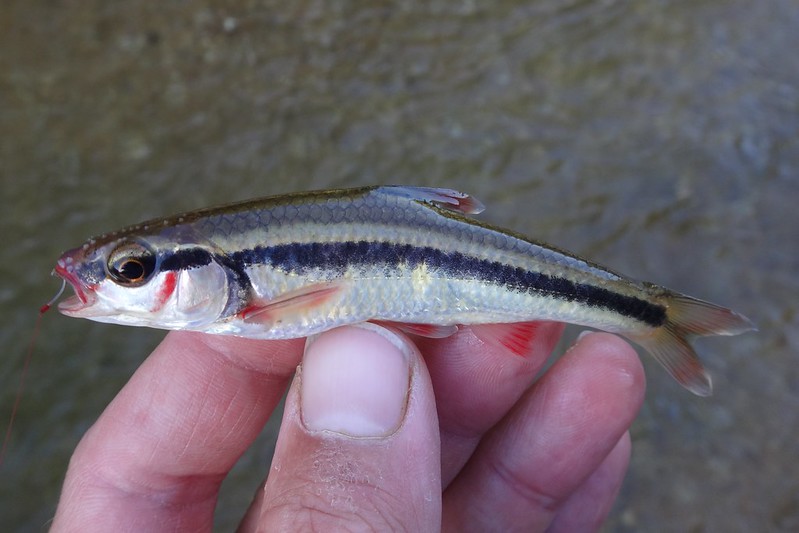
Gerry caught up to me and told me he could see gar in one of the shallow runs. Sure enough, there was a trio of longnose gar holding in the swift current, and they were either spawning or getting ready to. Every now and then they would lift their heads out of the water, but I could never get the timing right to get a good photo.
Longnose Gar (Lepisosteus osseus)

We were curious if the gar would go for bait, so I gave Gerry a shiner and he rigged it up with small treble hooks and freelined it to them. They showed zero interest. Oh well, it was worth a try!
When we climbed in the car we realized how hungry we were. BBQ in Rolla on the drive back to Meramec State Park really hit the spot. To be continued in part 2!
Bleeding Shiner (Luxilus zonatus)

Gerry caught up to me and told me he could see gar in one of the shallow runs. Sure enough, there was a trio of longnose gar holding in the swift current, and they were either spawning or getting ready to. Every now and then they would lift their heads out of the water, but I could never get the timing right to get a good photo.
Longnose Gar (Lepisosteus osseus)

We were curious if the gar would go for bait, so I gave Gerry a shiner and he rigged it up with small treble hooks and freelined it to them. They showed zero interest. Oh well, it was worth a try!
When we climbed in the car we realized how hungry we were. BBQ in Rolla on the drive back to Meramec State Park really hit the spot. To be continued in part 2!

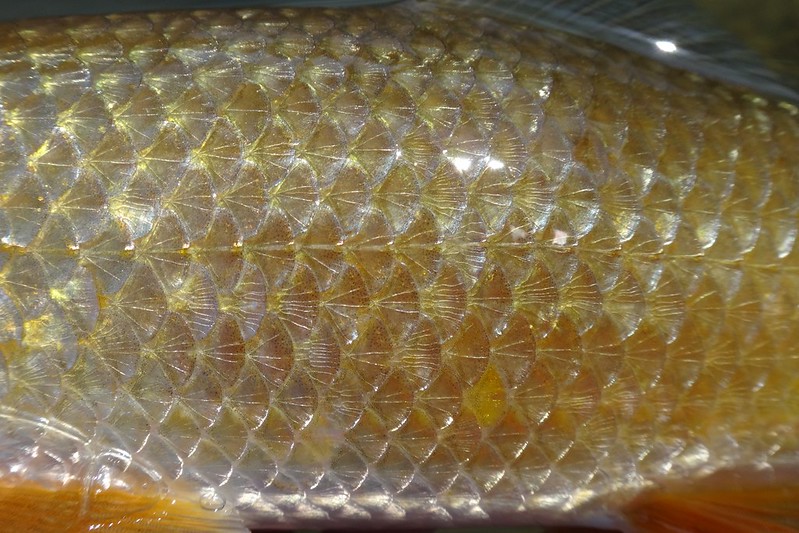
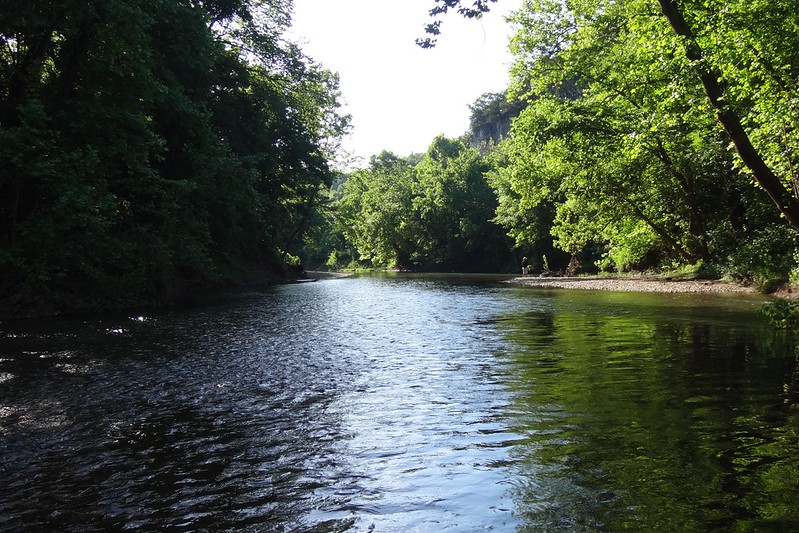
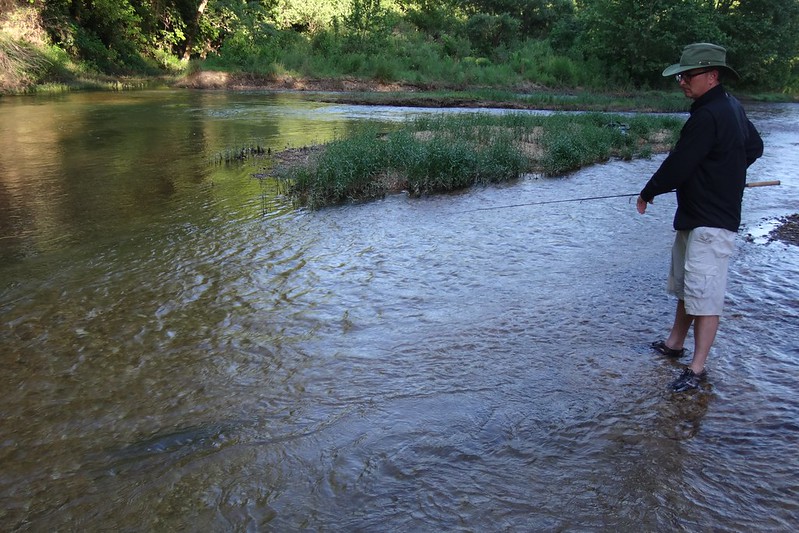
No comments:
Post a Comment
Note: Only a member of this blog may post a comment.